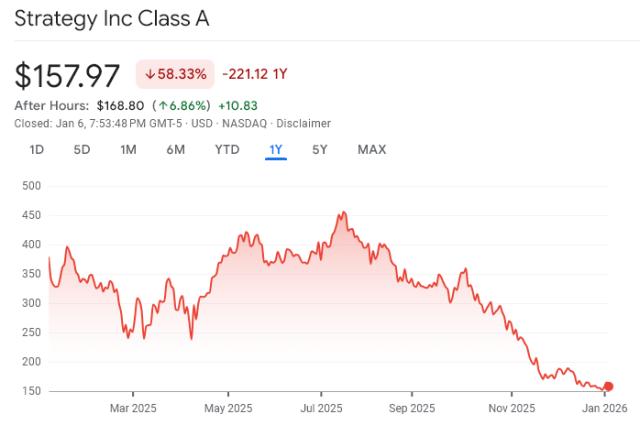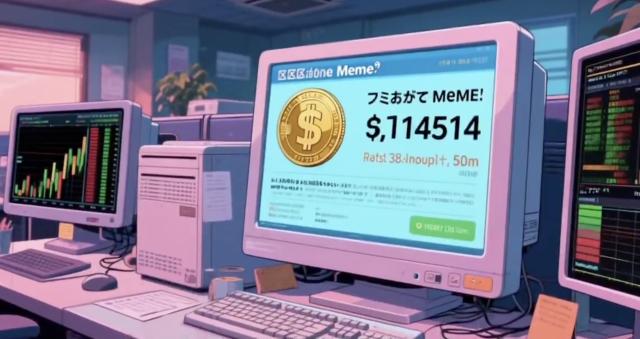Author: David Duong, Global Head of Research at Coinbase, compiled by Followin.
summary :
- We believe that cryptocurrencies appear to trade primarily within a technology-driven market, driven primarily by supply and demand factors rather than fundamentals.
- ETH has significantly underperformed this cycle compared to other major cryptocurrencies, which many attribute to the drop in Ethereum revenue following the Cancun upgrade in mid-March.
- However, while Ethereum’s network activity and supply inflation are important factors to consider, we also believe that price action is driven by the current market structure.
Crypto markets have been underperforming over the past few weeks as a lack of price momentum weighs on investor confidence. Price action has been volatile since the deleveraging event in early August, largely driven by technicals (supply and demand). Crypto markets have lagged behind U.S. equities on a risk-adjusted basis, especially as U.S. equities have largely recovered their losses since then. Institutional investors remain focused on Bitcoin, with Bitcoin’s market cap dominance reaching its highest level since April 2021 (57%).
Among major cryptocurrencies (by market cap), Ethereum (ETH) has significantly underperformed its peers, recently trading 1.6 standard deviations below its three-month average. Many experts have attributed this performance to reduced Ethereum activity (driving revenue lower) or ETH’s unfavorable token inflation dynamics, which we believe is only partly to blame. In fact, we have previously discussed the trade-offs inherent in Ethereum’s Layer 2-focused scaling roadmap and the impact this has on ETH’s value.
More likely, the lack of a particular narrative in this space and the limited supply of capital has increased scrutiny of Ethereum in comparison to other smart contract platforms. Our view is that crypto natives are also currently driving the market, and this group of people may flock to Altcoin and other cryptocurrencies that are increasingly difficult to exit. This may cause most of the wealth to be stranded instead of flowing to other parts of the crypto ecosystem. Regardless, in order for ETH to catch up, we believe Ethereum needs a new catalyst to help reignite developer and investor enthusiasm.
September’s seasonal bearishness is typically associated with the end of the fiscal year for many mutual funds, which could be a trigger for this market group to cut risk to achieve tax-loss harvesting. However, we believe that this year’s poor market behavior (observed in both traditional risk assets and cryptocurrencies) has also been exacerbated by uncertainty about how the outcome of the US election will affect the overall economy. This may have kept many investors on the sidelines, especially with the macroeconomic environment already quite ambiguous.
Indeed, open interest in the crypto space is quite light, as evidenced by stagnant open interest levels in perpetual futures — in the first 10 days of September, BTC open interest averaged around $14.8 billion and ETH averaged around $7.2 billion. This has been largely unchanged since mid-August, but remains higher than any month between 2022-2023. See Figure 1. Meanwhile, funding rates are stuck in the (positive) low single-digit territory.

In our view, the Fed’s rate decision, to be announced on September 17-18, is more of a hindrance to capital deployment than a directional driver. Fed Governor Christopher Waller hinted as early as September 6 that the most likely outcome was a 25 basis point rate cut in September, with the option to ease further at future meetings. This appears to be fully priced into Fed Funds futures.
However, while the deflationary trend now appears more firmly established, the Fed is focused on U.S. labor data, which is being closely watched for signs of a potential recession. Fears of a slowing economy may help explain why cryptocurrencies have failed to gain strength despite the significant weakness of the multi-dollar index (DXY) in July and August, as well as concerns about Bitcoin-specific oversupply. As such, we believe that cryptocurrencies appear to still trade primarily in a technically driven market, dominated by supply and demand factors rather than fundamentals. However, it is worth noting that the shape of the U.S. 2-year 10-year yield curve, which is often used as a leading indicator of recessions, recently ended one of the longest inversions on record.
Examining ETH’s underperformance
Meanwhile, among the higher-cap cryptocurrencies, ETH has been underperforming the likes of BTC and SOL, even after the launch of an Ethereum spot ETF in the U.S. in late July. There has been intense speculation among institutional investors as to why this is the case. The general consensus is that this performance is a result of a decline in total Ethereum transaction fees and transaction counts, particularly following the Ethereum Cancun upgrade in mid-March. The introduction of blobs is thought to have led to unprecedented levels of transaction activity on Ethereum’s layer 2 scaling solutions (L2s) — which is not good for Ethereum’s mainnet. Many believe that this has not only impacted the value of ETH, but has actively contributed to the reversal of ETH’s deflationary supply conditions.

In the report “ ETH and the Rise of L2s ” (published on August 13), we argue that this is not the whole story. We agree that ETH’s performance is closely tied to its ultrasonic money theory, and therefore, undermining this theory could have a material impact on the price. But the growth in activity on L2 is a red herring. It is true that only base fees and blob fees are destroyed according to EIP-1559, and the latter (generated by L2) are generally insignificant. However, our calculations show that even if 100% of L2 transaction fees (which have been reduced by 80-90% after the Cancun upgrade) were destroyed, ETH would still be inflationary. In other words, ETH’s positive inflation rate is not the only result of the migration of activity from mainnet to L2.
Furthermore, while crypto markets are less efficient than traditional markets, it is curious that there was a five-month lag between the slowdown in Ethereum on-chain activity and the subsequent impact on ETH price. Of course, one could argue that it wasn’t until August 2024 that Ethereum Layer 1 monthly fees reached their lowest point in four years. See Figure 3. But this was also true in the three months prior (May, June, and July), during which ETH’s risk-adjusted performance kept pace with (and sometimes even slightly outperformed) BTC or SOL. In fact, ETH only started to underperform other currencies from a risk-adjusted perspective in late July/early August. See Figure 2.

More likely, the reversal of the yen carry trade in early August triggered a massive deleveraging across many asset classes, and ETH was perhaps the most vulnerable position in many portfolios that needed to be forced to sell. In fact, after the US spot ETH ETF launched on July 23, this group of funds generated small net outflows of $57 million in the first two weeks, while the US spot BTC ETF had small net inflows of $69 million during the same period. This may have frustrated market participants who had expected the ETH price chart to follow the same pattern as BTC. Therefore, we believe that the current weakness in ETH may simply reflect the extent to which many people have piled into crowded trades relative to the existing spot supply of ETH.
That’s why, even though ETH’s inflation rate of ~0.7% year-over-year is still lower than other layer 1 tokens, the shift from negative to positive supply growth is still important. (Of course, comparing inflation rates across layer 1 tokens isn’t necessarily straightforward, as we covered in our August 28th report, Understanding Token Inflation .) However, this trend of growing ETH supply is nothing new. Since the Cancun escalation, ETH supply has been reversing the trend, adding over 240K ETH in recent months. While this is salient information, we think it raises the question of why the market didn’t price it in until recently.

Perhaps it’s because inflationary block rewards are only part of the supply equation. Over the same 5-6 month period, the amount of ETH staked increased by 2.65M ETH, well over 10x the amount of new ETH supply. However, the staking velocity has slowed to around 12% year-over-year as of September 10th, down from around 27% year-over-year in early August. This is also well below the 40-50% rate we saw before the Cancun upgrade, in part because EIP-7514 reduces the maximum validator churn limit to 8 per epoch (down from a variable rate of up to 14 before the upgrade) — slowing the rate at which validators join.
in conclusion
Overall, it is difficult to say if a bottom is forming in ETH prices. The total locked value (TVL) on Ethereum has fallen from $67 billion in June to $44 billion, returning to mid-February levels of this year. We believe that the token still needs a catalyst to help reverse its current market structure, but both traditional and crypto markets in general are very quiet at the moment. If this were to happen, demand for a spot ETH ETF could be supportive, but institutional interest has so far been focused on Bitcoin. In fact, we believe that many traditional players are still unable to better understand Ethereum's supply schedule and smart contract utility.
Beyond Bitcoin, we believe this market is dominated by crypto natives who are increasingly unlikely to buy ETH as a beta to the performance of the asset class. In fact, ETH’s beta to the broader crypto market averaged just 0.60 in 1H24, though it has since increased to 0.85. This group of market participants may also crowd into Altcoin and other positions that are increasingly difficult to exit, especially as memecoin activity is fragmented across different chains and token unlocking plans appear to be winding down. Additionally, the Ethereum mainnet may face new challenges with the upcoming launches of emerging L1 and L2 projects such as Berachain, Monad, and MegaETH in the coming months.
Ultimately, we believe ETH needs a narrative change in the short term to overcome these obstacles. This may involve more experiments on the mainnet to compete with other L1s, or bringing more real-world assets to the platform. However, what most institutional participants want to see is the launch of applications with broader public appeal that fully utilize Ethereum's potential.






